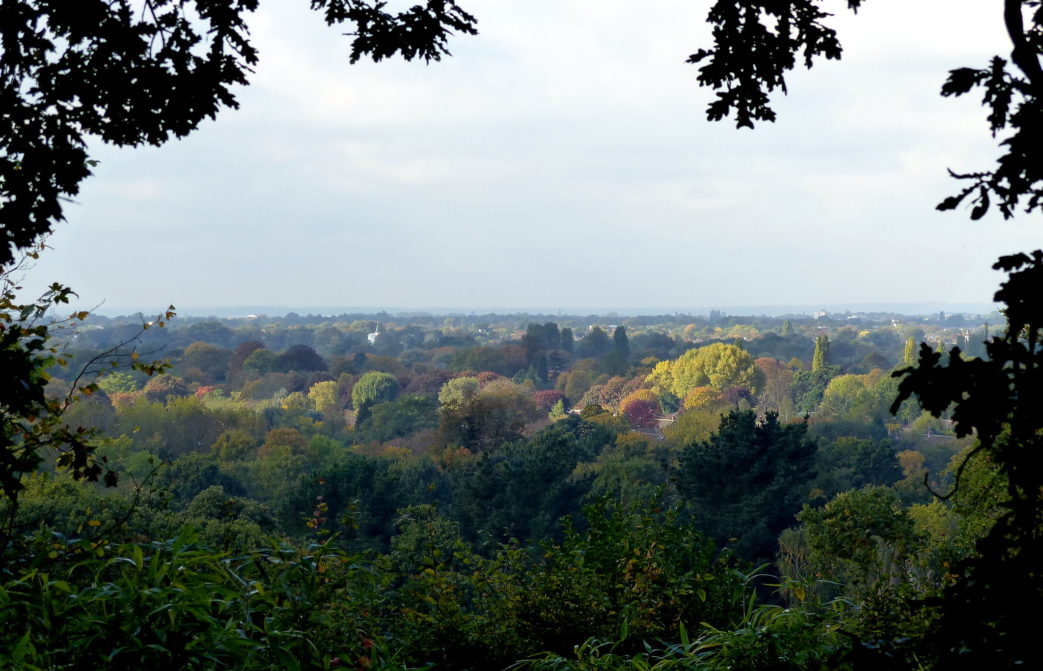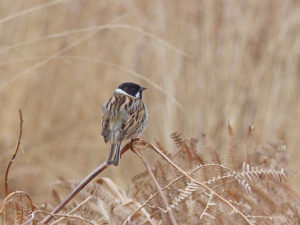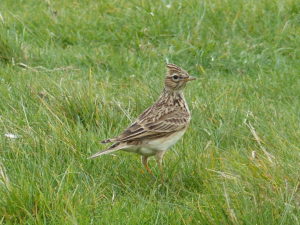Photos by Charles Roscorla: View over Richmond Park, Reed Bunting and Skylark.
Songbirds, owls and bats under threat
from proposed new flight paths over Richmond Park
Research scientists and conservation charity call on Heathrow to conduct a full environmental impact assessment
Two research scientists, working on human-induced effects on animals, have called for “a true impact analysis into how new fights proposed by Heathrow will affect Richmond Park’s wildlife” in an essay reviewing research on anthropogenic (man-made) noise.
In the essay, by Dr Hansjoerg Kunc and Dr Rouven Schmidt from Queen’s University, Belfast, state: “After nearly a decade of conducting research on the effects of anthropogenic noise on animals we are still puzzled by the lack of awareness of decision makers about the effects…on both animals and humans. The potential effects of loud noise on Richmond Park providing a home for thousands of different species, should not be underestimated.”
Kunc & Schmidt’s essay briefly summarises some recent published key research studies giving examples of the deleterious impacts on different songbirds, owls and bats species. Many of the species are currently breeding successfully in Richmond Park and some are rare and legally protected. Over 60 bird species nest in the Park including two owl species and up to 11 of the UK’s 18 bat species have been recorded.
Ron Crompton, Chairman of conservation charity Friends of Richmond Park, says of the research: “We’re grateful to Doctors Kunc and Schmidt for comprehensively illustrating the adverse impacts that the proposed new low and loud Heathrow flight paths could have on Richmond Park’s rich wildlife.”
Crompton continues: “We are calling on Heathrow to conduct a full and detailed environmental impact assessment. Their current consultation’s environmental assessment of Richmond Park is sketchy at best – for example, it looks only at beetles and ignores the numerous other species their flight plans will impact. They have done no research into the Park and so have no real evidence for their assertions there will be no impact.”
400 year old Richmond Park is not only a National Nature Reserve but is designated a Site of Special Scientific Interest and a Special Area of Conservation. It is the largest urban park in Europe and is visited by over 5.5 million Londoners and others each year who come for the rich wildlife, ancient trees, protected grasslands and peace and tranquility.
“In June, psychologist Dr Alison Greenwood wrote of her alarm over the new flight proposals and how this would impact upon the mental health and wellbeing of human visitors to Richmond Park”, says Crompton. “With this new review, we can now see how the wildlife is similarly threatened and yet Heathrow have not conducted any research into these impacts and are ignoring advice from the World Health Organisation and the government’s own recommendations”.
Crompton concludes:
“Richmond Park is a last refuge for nature in the busy, noisy, polluted metropolis; for wildlife, it’s an essential reservoir of species migrating out to other areas of London.
We challenge Heathrow to prove to Londoners that the new and increased low flights over Richmond Park will not damage the wildlife”.
Reed bunting song by Maurice Baker
Bird song selection by Kees Vanger
Bird song in Isabella Plantation, by Keith Howard (May 2019)
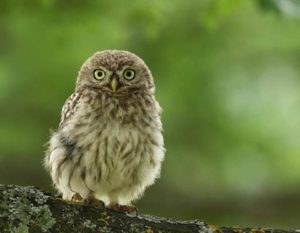
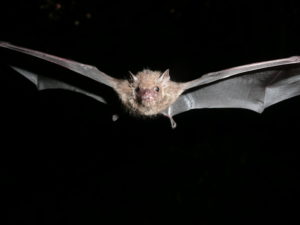
Little Owl by Paula Redmond Bat in flight by Philip Stouffer
Essay by Dr Hansjoerg Kunc and Dr Rouven Schmidt
Anthropogenic noise threatens animals
Dr Hansjoerg Kunc and Dr Rouven Schmidt
As part of its 3rd Runway expansion, Heathrow Airport proposes to route new arrival flight paths directly over Richmond Park National Nature Reserve for the first time, with corresponding low-flying aircraft noise at levels up to 80dB not experienced by the wildlife up to now. By comparison, the World Health Organization’s Environmental Noise Guidelines strongly recommends noise levels below 45dB.
This throws into focus the effect that anthropogenic (man-made) noise has on wildlife. Most people know of the effect of noise on marine mammals such as whales and dolphins, but there is an increasing body of research on the detrimental effect of noise on terrestrial creatures as well.
We understand that apart from assessments on the area around the expanded Heathrow Airport itself, there have as yet been no detailed environmental impact assessments on how the additional flights will affect sensitive wildlife areas such as Richmond Park which is also a Special Area of Conservation and Site of Special Scientific Interest.
We therefore thought it timely to briefly review the empirical evidence available on how anthropogenic noise affects animals.
Initially, early studies focused on the effects of noise particularly on marine mammals, reporting various negative effects (reviewed in Kunc et al 2016). These results inspired scientists to study potential effects on terrestrial animals as well and it can be concluded that anthropogenic noise affects many different animal species in both aquatic and terrestrial ecosystems.
Terrestrial species are affected by increasing anthropogenic noise levels in many different ways. One area that has been particularly well studied is the effect of noise on social interactions among animals. Such social interactions are maintained by communication and serve many different functions (e.g. mate attraction, territory defence, maintenance of pair bonds). Thus, it is important for animals to communicate successfully by using signals to get the message across.
Natural environmental sources of noise include the sounds of animals, wind, and torrents and species have evolved signals that transmit their message effectively and successfully to overcome this sort of background noise.
However, in evolutionary terms, anthropogenic noise is a very new special form of background noise and can be seen as another environmental selection pressure hampering the effectiveness of these signals shaped by natural selection.
Anthropogenic noise is often low-frequency, and thus, to avoid masking of signals by noise, animals have to adjust their signals. For example, great tits living in noisy cities raise the frequency of their songs to avoid masking of anthropogenic noise (Slabbekoorn and den Boer-Visser 2006; Mockford and Marshall 2009) and nightingales sing louder when the city noise increases (Brumm 2004).
Moreover, in many birds, females prefer males that sing complex songs. Several studies show that robins reduce the complexity of their songs in response to increasing anthropogenic noise (Montague et al. 2013, McMullen et al. 2013, McLaughlin and Kunc 2013). Consequently, these adjustments in song may hinder males in attracting females. For example, male reed buntings singing in noise polluted territories had a lower reproductive success than males in little polluted territories (Gross et al. 2010). Thus, anthropogenic noise deteriorates animal habitats by influencing the ability of animals to communicate, which can have implications for survival and population numbers.
Many of the 60+ breeding species recorded in Richmond Park are songbirds which use song, social and alarm signals for their social and familial interactions so the arrival of loud anthropogenic noise in the form of aircraft noise could put them at risk.
Acoustic signals are not only used in social interactions but also by both prey and predators. Potential prey warn conspecifics with alarm calls from approaching predators and increasing noise levels reduce the efficiency of alarm calls. In great tits, anthropogenic noise affects both the production and the perception of alarm calls hampering the sophisticated early warning system of this species (Templeton et al. 2016). A decrease in the effectiveness of alarm calling can have huge implications for an individual because failing to respond in time to an approaching predator can result in untimely death.
In contrast, some predators rely on effective detection of prey using sound. Anthropogenic noise can reduce their foraging by interfering with the sounds used to detect prey. For example, bats ave to invest more time in finding insects when noise levels are high and thus hunting becomes more energetically costly (Schaub et al. 2008, Siemers and Schaub 2010). Indeed, bats avoid noisy locations to hunt for prey.
Similarly, owls often use rustling sounds for localising small mammals and increasing noise levels hamper the ability of owls to hear rustling sounds which in turn increases hunting effort (Senzaki et al. 2016).
Since Richmond Park is home to up to 11 bat and two breeding owl species, increasing noise levels caused by planes flying low directly over the park would have negative effects on species that rely on a soundscape with low anthropogenic noise. As bats and owls play an important role in food webs, changes in behaviour, abundance and distribution of these predators can also negatively affect urban ecosystems such as Richmond Park.
So far we have outlined that noise effects individuals by hampering communication and foraging efficiency, which in turn can affect entire ecosystems. Another effect of noise is that it can also change population dynamics as increasing noise levels cause animals to avoid noise polluted areas which in turn leads to a decrease in abundance of species and overall population decrease.
For example, bird abundance declined by over one-quarter when noise was present in comparison to times when no anthropogenic noise was present (McClure et al. 2013), demonstrating that anthropogenic noise is a major driver of population dynamics. Thus, an increase in anthropogenic noise in the park could lead to an overall decrease in the number of individuals but also in the number of species. Thus, additional noise from aircraft could actively reduce the biodiversity of Richmond Park.
After nearly a decade of conducting research on the effects of anthropogenic noise on animals we are still puzzled by the lack of awareness of decision makers about the effects of anthropogenic noise on both animals and humans. The potential effects of loud anthropogenic noise on Richmond Park providing a home for thousands of different species, should not be underestimated.
From our short review summarising the effects of anthropogenic noise over decades of research carried out by many scientists on numerous different species it can be safely concluded that thorough assessments are needed to make a true impact analysis into how the new flights will affect Richmond Park’s wildlife.
Dr Hansjoerg Kunc works at Queen’s University Belfast researching how animals adjust their behaviour in response to human-induced environmental changes. Dr Rouven Schmidt is a behavioural ecologist and honorary research fellow at Queen’s University Belfast. If you would like to get in touch with us, please contact us via email h.kunc@qub.ac.uk or follow us on Twitter @KuncLab.
More information: email: trustees@frp.org.uk


